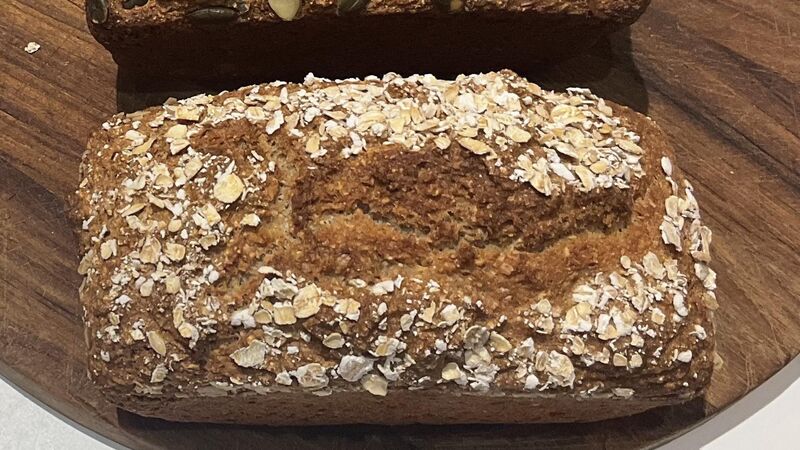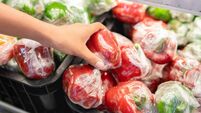Darina Allen: The Homesteading movement in America — and some beginner's recipe staples

Pic: iStock
There’s a really interesting movement in the US called Homesteading.
I think it may have originated in America, but it certainly gathered momentum during covid, when thousands left the cities for rural areas to get away from crowds and out of their cramped apartments.
Some acquired land or settled on farms or ranches, others had small back gardens or balconies. They gradually adjusted to life in the countryside.
Many wanted to take back control to grow some of their own food, vegetables, and a few herbs, keep a few hens, pigs, or even a cow.
They longed to bake bread, make jams, pickles, and preserve but struggled to relearn, forgotten or more often, never-learned skills.
Many returned to urban living after the pandemic, but many did not, and now others are eagerly joining the movement saying, 'it’s my one and only life, there must be a better way than this'.
There are multiple blogs, chapters, podcasts, and huge conferences for devotees.
Often they are young professionals, sometimes with small children who are sick and tired of the rat race in the cities, the commute, the cost-of-living crisis, and ever-escalating rents.
While this movement is called Homesteading in the US, there is an equivalent movement in the UK, and in several other countries — Spain, France, Italy, Portugal, Germany, and Australia.
In the US, it seems to be particularly among Millennials and Gen Z — often highly educated young techies, people in the financial world, lawyers, accountants, and those who can quite easily work from home.
They dream of being self-sufficient and enjoying a different lifestyle both for themselves and for their children, who long to roam wild and free. Some home school and others even choose to live off the grid.
For many, it’s a romantic dream, but they soon discover that to be comfortably self-sufficient you need to be of considerable independent means. Otherwise, it can be all work and very little play.
Talking about change, now that I am in my mid-seventies, I’m being encouraged to draw back from the day-to-day running of the Ballymaloe Cooking School and to leave it to the very competent team around me.
It became evident not only to me but to everyone else that retirement was not quite in my character and that if I wasn’t to drive myself and everybody else totally mad, I certainly needed another project.
So, my new ‘start-up’ at 75 is the Ballymaloe Organic Farm School which runs concurrently with the Ballymaloe Cookery School here in the middle of our 100-acre organic farm in East Cork.
This got underway last autumn. There’s been an enthusiastic response and the curriculum continues to build. There are day courses and week courses and at present we are midway through the Six Week Sustainable Food Programme.
The fully subscribed course is made up of five nationalities with the highest percentage coming from America. There’s a real craving to relearn skills and to take back control of our lives and food.
There seems to be growing skepticism of the corporate world. People appear to trust multinationals, governments, and financial institutions less and less. Essentially, the movement would seem to be a rejection of the status quo.
People on this 6-week Sustainable Programme come from a myriad of different backgrounds and careers, want to learn how to live more sustainably, and to have a lighter impact on the planet.
They are determined to find ways to be part of the solution rather than the problem.
Brown soda bread
This comforting Irish classic is a perfect afternoon treat paired with salted butter and berry jam or enjoyed with a bowl of piping hot soup

Servings
10Preparation Time
15 minsCooking Time
30 minsTotal Time
45 minsCourse
BakingIngredients
340g wholemeal flour
110g plain white flour
15g butter
A barely rounded teaspoon of bread soda
1 tsp salt
1 egg
415ml (470ml, minus the egg) buttermilk
Method
Preheat the oven to 230ºC.
Mix the flours in a large bowl and rub in the butter. Add the salt and sieved bread soda. Lift the flour up with your fingers to distribute the salt and bread soda.
Add the beaten egg (if using) to the buttermilk. Make a well in the centre and pour in all the liquid. With your fingers stiff and outstretched, stir in a circular movement from the centre to the outside of the bowl in ever-increasing concentric circles. When you reach the outside of the bowl seconds later the dough should be made.
Sprinkle a little wholemeal flour on to the worktop. Turn the dough out onto the flour. Sprinkle a little flour on your hands. Gently tidy the dough around the edges and flip onto the flour. Tuck the edges underneath with the inner edge of your hands, gently pat the dough with your fingers into a loaf about 4cm thick.
Cut a deep cross into the bread (this is called ‘Blessing the bread’ and then prick it in the centre of the four sections to 'let the fairies out of the bread').
Transfer to a floured baking tray.
Bake in the preheated oven for 5 minutes and then reduce the temperature to 200ºC for the remaining 25-30 minutes. Turn the bread upside down after approximately 30 minutes. Cool on a wire rack.
Vegetable soup
Following the Ballymaloe soup formula (1:1:3:5), this versatile soup is smooth, hearty and bursting with flavour

Servings
6Preparation Time
10 minsCooking Time
20 minsTotal Time
30 minsCourse
StarterIngredients
50g butter
150g potatoes, peeled and diced
110g onions, peeled and diced
340g chopped vegetables of your choice, diced
1.2l stock or 1l stock and 150ml creamy milk
seasoning
Method
Melt the butter in a heavy-bottomed saucepan.
When it foams, add potatoes and onions and turn them until well coated. Sprinkle with salt and freshly ground pepper. Cover with a butter wrapper or paper lid and the lid of the saucepan.
Sweat on a gentle heat for 10 minutes. Add the vegetables and stock, bring it back to the boil and continue to cook until soft, and liquidise. Do not overcook or the vegetables will lose their flavour. Adjust seasoning.
Bread and butter pudding
This divinely rich dessert with hints of mixed spice and incorporated sultanas is a classic dessert for good reason - delicious with a dollop of softly whipped cream

Servings
8Preparation Time
1 hours 20 minsCooking Time
60 minsTotal Time
2 hours 20 minsCourse
BakingIngredients
12 slices good-quality white bread, crusts removed
50g butter, preferably unsalted
½ tsp freshly grated nutmeg, cinnamon or mixed spice
200g sultanas
450ml cream
225ml milk
4 eggs, lightly beaten
1 tsp pure vanilla extract
175g sugar plus 1 tbsp for sprinkling
pinch of salt
Equipment:
1 x 20.5cm (8 inch) square pottery or china dish
Method
Butter the bread and arrange four slices, buttered side down, in one layer in the buttered dish. Sprinkle the bread with half the spice and half the sultanas, and then arrange another layer of bread, buttered side down, over the raisins, and sprinkle the remaining nutmeg and sultanas on top.
Cover the sultanas with the remaining bread, again, buttered side down. In a bowl whisk together the cream, milk, eggs, vanilla extract, sugar and the pinch of salt.
Pour the mixture through a fine sieve over the bread. Sprinkle the tablespoonful of sugar over the top and let the mixture stand, loosely covered, at room temperature for at least 1 hour or chill overnight.
Preheat the oven to 180°C.
Place the pudding in a bain-marie and pour in enough water to come half way up the sides of the baking dish. Bake the pudding in the middle of the oven for about one hour, or until the top is crisp and golden. Serve the pudding warm with some softly whipped cream.
Learn how to use all leftovers - email darina@cookingisfun.ie for ideas.
- Dry citrus peels for firelighters, they’ll dry in your oven as it cools down after baking.
- Use large paper bags or flour bags as bin liners.
- Let’s really think about everything we put into your shopping basket, when you think about it, every food euro we spend and every bite we eat has implications on our health and the environment.
- Don’t waste a scrap of stale bread, make breadcrumbs, bread and butter pudding, Poor Knights of Windsor (French toast)...
Michael Kelly of GIY Ireland (Grow It Yourself) has started a bi-weekly podcast called Food Matters.
The first episode was with ‘Broccoli Baron’ Paul Brophy who grows over 70% of Ireland’s broccoli crop who discussed the state of the Irish food system and the existential challenges that vegetable producers are facing. Check it out.
Have you seen the super-exciting lineup at the Ballymaloe Festival of Food this weekend? See you there.
, see www.ballymaloegrainstore.com/ballymaloe-festival-of-food
Read More




